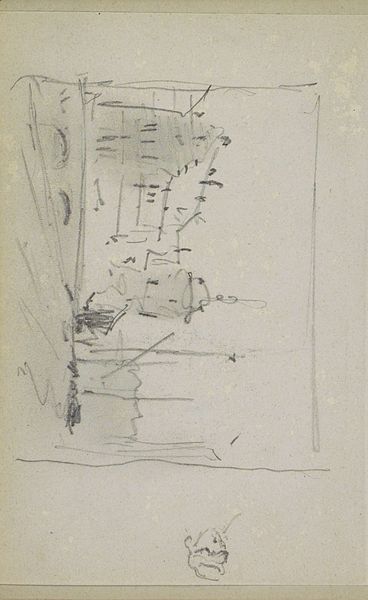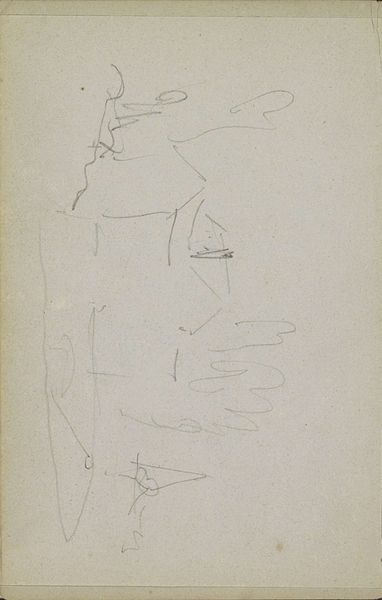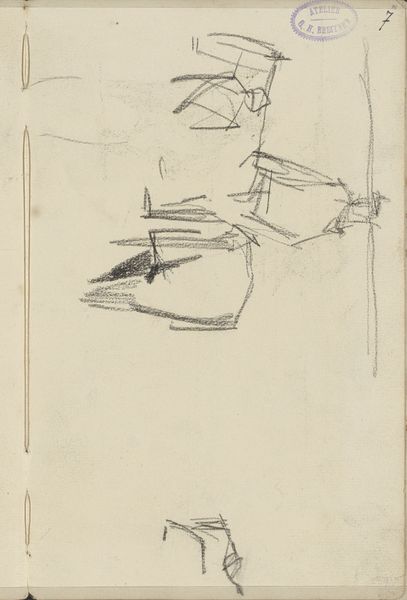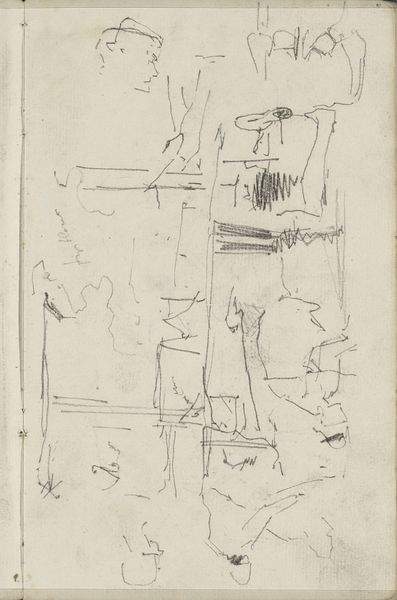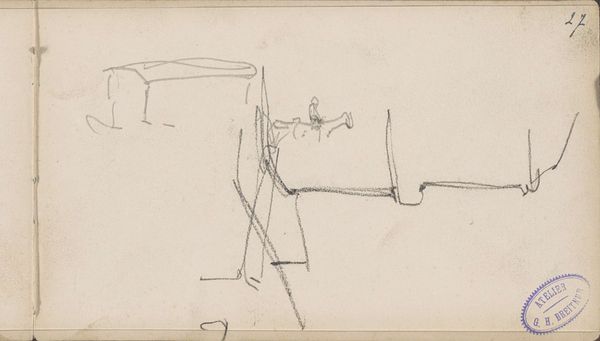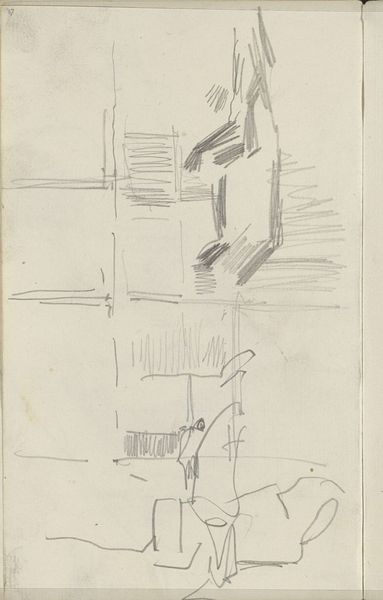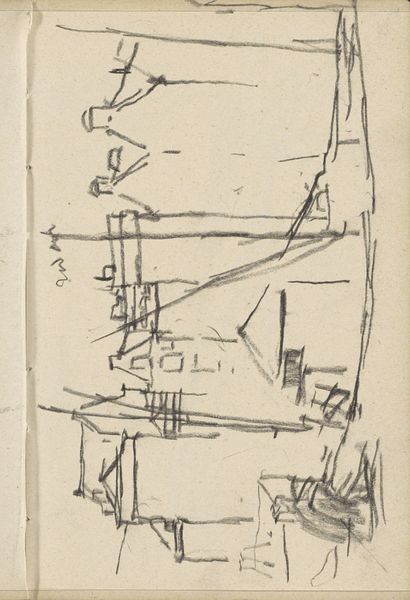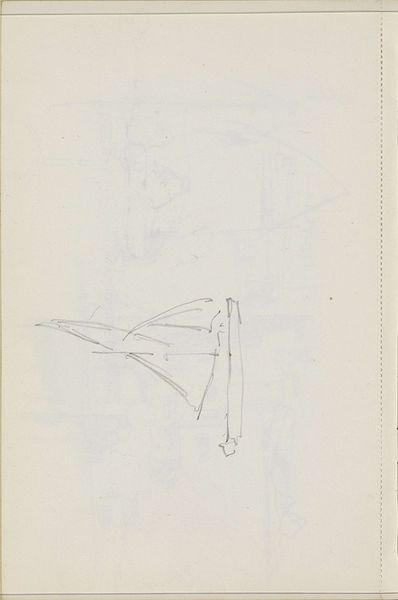
Copyright: Rijks Museum: Open Domain
Editor: So, here we have Cornelis Vreedenburgh's "Streetlight Along a Road," a pencil and pen drawing from somewhere between 1890 and 1946. It's just a quick sketch, very minimal, almost ghostly. What strikes you most about this seemingly simple image? Curator: It's interesting to see the bare bones of a cityscape rendered with such economy. It feels like a moment of urban planning caught in transit. What kind of statement might Vreedenburgh be making about urbanization, even in this quick study? Was this a statement or was it practice? Editor: Maybe he’s exploring how new technologies, like street lighting, were changing the experience of the city? It definitely feels like an observation. Curator: Precisely. How does the drawing capture a sense of this era's shift in our societal use of public spaces with developments such as streetlight systems? Perhaps he’s investigating light, and our place beneath it, with the advent of electrical lighting? Editor: That’s fascinating. I hadn't thought about the social impact of street lighting beyond just safety, you know? Curator: Think about it. Public lighting expanded our usable hours within the cityscape, and allowed increased mobility across different socioeconomic strata. Consider where he placed this lamppost in relation to roads and buildings; it is an intimate placement. Could that be a representation of accessibility, as well? What is more, where is *this* specific placement coming from, given Vreedenburgh's historical status as someone from an upper class social position? Editor: I see your point. It’s more than just a streetlight; it's about access, class, societal shifts... and even more nuanced based on his identity. Thanks, I will have to ponder this. Curator: My pleasure! Hopefully these things will help shape a perspective of not only how people view art, but also why art like this exists in museums to begin with.
Comments
No comments
Be the first to comment and join the conversation on the ultimate creative platform.
